Category: Recommended Reading
Tom Luddy (1943 – 2023) Film Producer
various people at The Guardian:
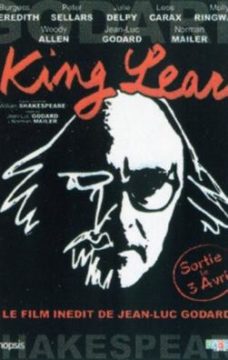 Tom played an incredibly important role in the history of modern cinema. Back in the 1970s, Tom was part of a counterculture generation who saw something new in the arthouse films being made in Europe. To him they were radical in a completely new way. They could change the world. Culture could be political.
Tom played an incredibly important role in the history of modern cinema. Back in the 1970s, Tom was part of a counterculture generation who saw something new in the arthouse films being made in Europe. To him they were radical in a completely new way. They could change the world. Culture could be political.
Tom believed that very deeply – and he brought directors like Jean-Luc Godard, Wim Wenders and Werner Herzog over to the west coast and showed their films to a new generation like Francis Ford Coppola. Out of that came American independent cinema which flourished in the 1990s. But Tom was different from many of his counterculture generation. He was very aware of what happened to those radical ideas once they were injected into Hollywood.
more here. (h/t Brooks Riley)
Sunday Poem
Come In
As I came to the edge of the woods,
Thrush music—hark!
Now it was dusk outside,
Inside it was dark.
Too dark in the woods for a bird
By slight of wing
To better its perch for the night,
Though it still could sing.
The last of the light of the sun
That had died in the west
Still lived for one song more
In a thrush’s breast.
Far in the pillared dark
Thrush music went—
Almost like a call to come in
To the dark and lament.
But no, I was out for stars:
I would not come in.
I meant not even if asked,
And I hadn’t been.
by Robert Frost
from Homage to Robert Frost
Farrar Straus Giroux, New York, 1996
Saturday, February 25, 2023
Don’t worry about AI breaking out of its box—worry about us breaking in
 Rob Reid in Ars Technica:
Rob Reid in Ars Technica:
Shocking output from Bing’s new chatbot has been lighting up social media and the tech press. Testy, giddy, defensive, scolding, confident, neurotic, charming, pompous—the bot has been screenshotted and transcribed in all these modes. And, at least once, it proclaimed eternal love in a storm of emojis.
What makes all this so newsworthy and tweetworthy is how human the dialog can seem. The bot recalls and discusses prior conversations with other people, just like we do. It gets annoyed at things that would bug anyone, like people demanding to learn secrets or prying into subjects that have been clearly flagged as off-limits. It also sometimes self-identifies as “Sydney” (the project’s internal codename at Microsoft). Sydney can swing from surly to gloomy to effusive in a few swift sentences—but we’ve all known people who are at least as moody.
No AI researcher of substance has suggested that Sydney is within light years of being sentient. But transcripts like this unabridged readout of a two-hour interaction with Kevin Roose of The New York Times, or multiple quotes in this haunting Stratechery piece, show Sydney spouting forth with the fluency, nuance, tone, and apparent emotional presence of a clever, sensitive person.
For now, Bing’s chat interface is in a limited pre-release. And most of the people who really pushed its limits were tech sophisticates who won’t confuse industrial-grade autocomplete—which is a common simplification of what large language models (LLMs) are—with consciousness. But this moment won’t last.
More here.
America’s Toxic Romance With the Free Market
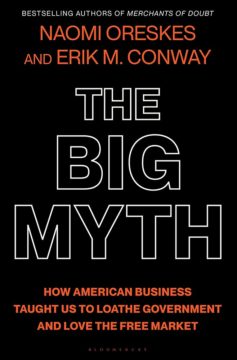 Claudia Dreifus in The Nation:
Claudia Dreifus in The Nation:
The publication of Naomi Oreskes and Erik M. Conway’s Merchants of Doubt: How a Handful of Scientists Obscured the Truth on Issues From Tobacco Smoke to Climate Change in 2010 helped transform how science news was reported in the media. The book persuaded reporters worldwide to become more skeptical of industry-sponsored “experts”—particularly on issues like global warming. Oreskes and Conway hope their latest collaboration, The Big Myth: How American Business Taught Us to Loathe Government and Love the Free Market (Bloomsbury), will have a similar impact. I recently caught up with Oreskes, who teaches science history at Harvard, and is also the author of Why Trust Science, Science on a Mission: How Military Funding Shaped What We Do and Don’t Know About the Ocean, and Plate Tectonics An Insider’s History of the Modern Theory of the Earth. Long ago, in another life, Oreskes was a geologist. During our conversation, we discussed The Big Myth and how free-market economics became a dominant force in American public policy.
—Claudia Dreifus
CLAUDIA DREIFUS: How did the idea behind The Big Myth come to you?
NAOMI ORESKES: After the success of Merchants of Doubt, Erik and I started thinking about doing another book together. At first, we thought we’d write about the technological solutions to climate change. But every time we started, what kept coming up was that a lack of the right technologies wasn’t the problem—most of the technologies we need already exist. But to get them in place, you need the right policies. That’s mostly a political question. That threw us back to something we’d been thinking about since we began researching Merchants of Doubt. In that book, the big question was “Why would intelligent people deny science?” In particular, why would famous scientists attack science to create doubt about the dangers of smoking, the thinning of the ozone layer, and climate change?
More here.
Money as Empire?
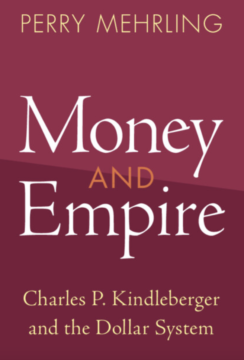 Herman Mark Schwartz in Phenomenal World:
Herman Mark Schwartz in Phenomenal World:
Money makes the world go round, or as Karl Marx put it, Geldgespräche, Quatsch-Spaziergänge. How does this work at the global or international level? Perry Mehrling’s elegantly written biography of the MIT economist Charles Poor Kindleberger illuminates the relationship between money and the global structure of economic and political power. Kindleberger, a distinguished economic historian, was in many ways, and to his own surprise, a central and founding figure in the political science subfield of International Political Economy (IPE). Breaking with the emerging abstract economic models of his time, he developed an empirical and practical approach that emphasized the importance of the political infrastructure underpinning global financial markets, and the ever present possibility of crisis. Lurking in the background of this biographical narrative is a greater story about empire, left whispering in the softest possible voice—a Straussian sotto voce.
Servant of empire?
Empires run on money. In durable empires, that money pays bureaucrats who run the empire, so empires need people as well. Kindelberger’s early life trajectory was well suited to the bureaucratic needs of the mid-twentieth century American empire. As Mehrling repeatedly notes, Kindleberger was a WASP through and through. WASPs—White Anglo-Saxon Protestants—were the original ethnonational core of the Thirteen Colonies, in a definition that expanded enough to encompass the initially “foreign” German and Dutch settlements in the mid-Atlantic colonies but never enough to include the subsequent wave of immigrant Irish Catholics, let alone enslaved Africans.
More here.
A Note-Perfect Pianist’s Memoir
Peter Conrad at The Guardian:
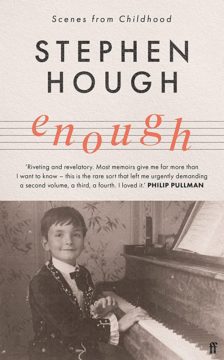 “A writer is God,” says Hough admiringly, thinking of God – he is a Catholic convert – rather than claiming godlike powers for himself. He then quotes the Bible on the word being made flesh as “an idea floating in the air is caught, a concept becomes carnal”. The piano leaves ideas afloat, airily uncatchable: Hough’s book describes “the liquid lasso” of a stone thrown into a pond in Debussy’s Reflets dans l’eau, and in the notes to his recent recording of Federico Mompou’s Música Callada he remarks that these brief, whispery religious meditations evaporate as they are played. Defying the monochrome abstraction of the keyboard, Hough always sets himself to make sounds tell stories without words. In his reimagining, Tippett’s Piano Concerto proceeds from an orchestral rumbling “under the soil of the earth to the tinkle of arpeggios tracing a delicate tune above the treetops”.
“A writer is God,” says Hough admiringly, thinking of God – he is a Catholic convert – rather than claiming godlike powers for himself. He then quotes the Bible on the word being made flesh as “an idea floating in the air is caught, a concept becomes carnal”. The piano leaves ideas afloat, airily uncatchable: Hough’s book describes “the liquid lasso” of a stone thrown into a pond in Debussy’s Reflets dans l’eau, and in the notes to his recent recording of Federico Mompou’s Música Callada he remarks that these brief, whispery religious meditations evaporate as they are played. Defying the monochrome abstraction of the keyboard, Hough always sets himself to make sounds tell stories without words. In his reimagining, Tippett’s Piano Concerto proceeds from an orchestral rumbling “under the soil of the earth to the tinkle of arpeggios tracing a delicate tune above the treetops”.
more here.
U.S. scientific leaders need to address structural racism, report urges
Katie Langin in Science:
 Leaders in the U.S. scientific community must dismantle the power structures that lead to racial inequities within their organizations and create an environment in which everyone feels supported, says a report released today by the U.S. National Academies of Sciences, Engineering, and Medicine. The 359-page report includes 12 recommendations for leaders who want to foster change. “There is no magic bullet; there’s no one single answer,” said Gilda Barabino, president of the Olin College of Engineering and co-chair of the committee that wrote the report, in a webinar today. “We need a multitude of approaches, and we need to do them strongly and meaningfully.”
Leaders in the U.S. scientific community must dismantle the power structures that lead to racial inequities within their organizations and create an environment in which everyone feels supported, says a report released today by the U.S. National Academies of Sciences, Engineering, and Medicine. The 359-page report includes 12 recommendations for leaders who want to foster change. “There is no magic bullet; there’s no one single answer,” said Gilda Barabino, president of the Olin College of Engineering and co-chair of the committee that wrote the report, in a webinar today. “We need a multitude of approaches, and we need to do them strongly and meaningfully.”
A multipronged strategy is ultimately what’s needed to really move the needle, agrees Stephen Thomas, a professor at the University of Maryland, College Park, who was not involved in creating the report. Past efforts have often involved incremental changes, says Thomas, a leader of the National Research Mentoring Network funded by the U.S. National Institutes of Health: “Here’s a study here and let’s see if we can scale it, and here’s a study there and see if we can scale it—all one by one.” In contrast, he says the report’s call for implementing many changes at once is “a move in the right direction and it’s very bold at a time when we’re literally seeing elected officials … undermine the very objective evidence that the research is pointing out.”
More here.
Spirituality In The Age Of Science
Julien Crockett and Alan Lightman at the LARB:
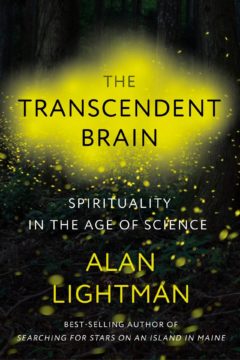 When did you begin on the project of reconciling a scientific worldview with human experience?
When did you begin on the project of reconciling a scientific worldview with human experience?
Probably as a child. It started with my sort of schizophrenic interests in both the sciences and the arts. I did experiments and built rockets. I wrote poetry in which I expressed my awe of the world, my bafflement, my questions.
In one of your earlier books, The Accidental Universe, you write that theoretical physics is “the deepest and purest branch of science. It is the outpost of science closest to philosophy, and religion.” Did you become a theoretical physicist because it allowed you to maintain these dual interests?
Yes, I think so. Of course, in college, I took a lot of courses, and not just science courses. But when it came time to choose a particular science that I wanted to put most of my effort into, it was theoretical physics for the reasons you mentioned. Also, I was attracted by the fact that physics is the most fundamental of all the sciences. I like to dig into the world as deeply as possible.
more here.
Richard Dawkins & Alan Lightman on Science & Religion
Black entertainers are still longing for equity in entertainment
April Reign on PBS:
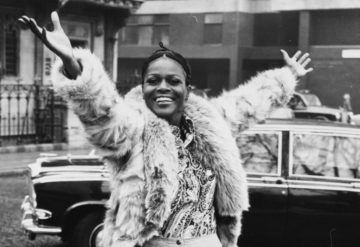 Black actresses have always faced barriers. Initially, they were not allowed to be on screen at all. Then, they could only play certain types of roles: typically either as a servant and/or enslaved woman, or as an “exotic” temptress. Never a character that was fully realized, one with depth or nuance.
Black actresses have always faced barriers. Initially, they were not allowed to be on screen at all. Then, they could only play certain types of roles: typically either as a servant and/or enslaved woman, or as an “exotic” temptress. Never a character that was fully realized, one with depth or nuance.
While we would like to think that things have changed significantly, the facts don’t bear that out. Indeed, even after Black actresses win some of the most coveted awards in the entertainment industry, they still struggle to find meaningful work. Halle Berry, Whoopi Goldberg and Mo’Nique have all publicly discussed this phenomenon as Oscar winners. Berry explains in How It Feels To Be Free that while she expected doors would open for her as the first Black woman to win an Oscar for best actress, she found the opposite to be the case. In fact, Oscar winner Octavia Spencer recounted that she received assistance from Jessica Chastain in negotiating a salary five times larger than it otherwise would have been, because Chastain tied Spencer’s salary to her own. In other words, Jessica Chastain, a white woman, used her privilege to advocate on behalf of Octavia Spencer, the Oscar winner.
More here. (Note: Throughout February, at least one post will be dedicated to Black History Month. The theme for 2023 is Black Resistance. Please send us anything you think is relevant for inclusion)
Saturday Poem
Small Kindnesses
I’ve been thinking about the way, when you walk
down a crowded aisle, people pull in their legs
to let you by. Or how strangers still say “bless you”
when someone sneezes, a leftover
from the Bubonic plague. “Don’t die,” we are saying.
And sometimes, when you spill lemons
from your grocery bag, someone else will help you
pick them up. Mostly, we don’t want to harm each other.
We want to be handed our cup of coffee hot,
and to say thank you to the person handing it. To smile
at them and for them to smile back. For the waitress
to call us honey when she sets down the bowl of clam chowder,
and for the driver in the red pick-up truck to let us pass.
We have so little of each other, now. So far
from tribe and fire. Only these brief moments of exchange.
What if they are the true dwelling of the holy, these
fleeting temples we make together when we say, “Here,
have my seat,” “Go ahead—you first,” “I like your hat.”
by Danusha Laméris
from The New York Times, 9/19/2019
Friday, February 24, 2023
The miraculous, Oscar-tipped film about Delhi’s bird hospital
Patrick Barkham in The Guardian:
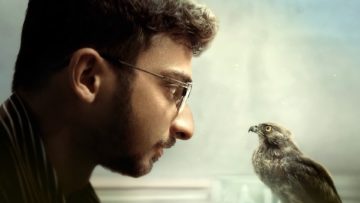 There is an astonishing moment near the beginning of All That Breathes, a luminous documentary about the labours of two brothers who rescue birds of prey falling from the polluted skies of Delhi. Salik Rehman, a young assistant, is feeding an injured raptor on a rooftop. A chipmunk scampers along the balcony and, seeing the bird, abruptly turns tail. Then, suddenly, a wild black kite dive-bombs Rehman, neatly lifts his glasses from his nose and carries them away.
There is an astonishing moment near the beginning of All That Breathes, a luminous documentary about the labours of two brothers who rescue birds of prey falling from the polluted skies of Delhi. Salik Rehman, a young assistant, is feeding an injured raptor on a rooftop. A chipmunk scampers along the balcony and, seeing the bird, abruptly turns tail. Then, suddenly, a wild black kite dive-bombs Rehman, neatly lifts his glasses from his nose and carries them away.
It’s the kind of small, strange miracle that belongs in magical realism fiction. The fact that it is real can only mean that director Shaunak Sen spent thousands of hours gathering material for his all-conquering feature-film, which has won best documentary at Sundance and Cannes and is now nominated at the Baftas and the Oscars.
More here.
Many Americans wrongly assume they understand what normal blood pressure is – and that false confidence can be deadly
Wändi Bruine de Bruin and Mark Huffman in The Conversation:
 Stunning as it may sound, nearly half of Americans ages 20 years and up – or more than 122 million people – have high blood pressure, according to a 2023 report from the American Heart Association. And even if your numbers are normal right now, they are likely to increase as you age; more than three-quarters of Americans age 65 and older have high blood pressure.
Stunning as it may sound, nearly half of Americans ages 20 years and up – or more than 122 million people – have high blood pressure, according to a 2023 report from the American Heart Association. And even if your numbers are normal right now, they are likely to increase as you age; more than three-quarters of Americans age 65 and older have high blood pressure.
Also known as hypertension, high blood pressure is a major risk factor for heart disease and stroke.
Our research has found that most Americans don’t know the normal or healthy range for blood pressure – yet strikingly, they think they do. And that is cause for serious concern.
More here.
Lex Fridman Talks To Betül Kaçar
How US Intelligence Agencies Hid Their Most Shameful Experiments
Matthew Connelly in Literary Hub:
 Although proponents of secret science like to focus on examples in which it has benefited society, insiders from the very beginning of the Cold War worried that the best minds would not be drawn to work that they could not even talk about. Secrecy protected those involved from embarrassment or criminal prosecution, but it also made it much harder to vet experimental protocols, validate the results, or replicate them in follow-up research.
Although proponents of secret science like to focus on examples in which it has benefited society, insiders from the very beginning of the Cold War worried that the best minds would not be drawn to work that they could not even talk about. Secrecy protected those involved from embarrassment or criminal prosecution, but it also made it much harder to vet experimental protocols, validate the results, or replicate them in follow-up research.
One research manager at a Department of Energy weapons lab would later admit, “Far more progress is actually evidenced in the unclassified fields of research than the classified ones.” The physicist Robert McCrory, whose own lab received millions in funding in partnership with Lawrence Livermore, Sandia, and Los Alamos National Laboratories, was even more blunt: “Some of the work is so poor that if it were declassified, it would be laughed off the face of the Earth.”
More here.
What Did Robert Johnson Encounter at the Crossroads?
Ted Gioia at his Substack, The Honest Broker:
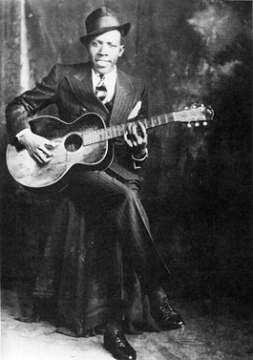 The crossroads shows up in three separate places in Plato’s accounts of the afterlife. In the Gorgias, Plato describes a “Meadow at the Crossroads,” where one path goes to the Isles of the Blessed, while the other leads to a prison of punishment and retribution.
The crossroads shows up in three separate places in Plato’s accounts of the afterlife. In the Gorgias, Plato describes a “Meadow at the Crossroads,” where one path goes to the Isles of the Blessed, while the other leads to a prison of punishment and retribution.
The imagery recurs in the Republic, where we are told that the virtuous person departs to the right and ascends to the heavens, while the rest must travel to the left and downwards, where they pay a “tenfold penalty for each injustice.” Socrates assures us that this isn’t just idle speculation. His source is a soldier who was killed in battle, and twelve days later was placed on the funeral pyre—where he revived, to the shock of onlookers, and gave his account of what he had seen and heard in the world beyond.
more here.
A Hall of Mirrors
Gary Indiana at The Paris Review:
 Months after buying the house, I learned, piece-meal, from people who should have told me what they knew about that house before I signed the mortgage papers, that the sprawling white elephant I’d acquired had functioned in the middle past as a transient home for orphans and abandoned children awaiting adoption into foster care. A few years later, the house became an overflow domestic abuse shelter for women hiding from stalking husbands and boyfriends. There were even indications, in two of the basement areas, that meetings of some disreputable fraternal organization, something along the lines of Storm Front, had been held there for a while. These may also have featured a karaoke night, since besides the crumpled confederate flags and vague neo-Nazi debris scattered in corners, there was also a truncated proscenium stage with a microphone stand and a dead amplifier on it.
Months after buying the house, I learned, piece-meal, from people who should have told me what they knew about that house before I signed the mortgage papers, that the sprawling white elephant I’d acquired had functioned in the middle past as a transient home for orphans and abandoned children awaiting adoption into foster care. A few years later, the house became an overflow domestic abuse shelter for women hiding from stalking husbands and boyfriends. There were even indications, in two of the basement areas, that meetings of some disreputable fraternal organization, something along the lines of Storm Front, had been held there for a while. These may also have featured a karaoke night, since besides the crumpled confederate flags and vague neo-Nazi debris scattered in corners, there was also a truncated proscenium stage with a microphone stand and a dead amplifier on it.
My cat had infinitely better sense than I did. She knew right away that house was haunted and that I never should have bought it.
more here.
Acapella Version of “Bridge Over Troubled Water”
Friday Poem
Equinox
Dear child of the near future,
here is what I know—hawks
soar on the updraft and sparrows always
return to the seed source until they spot
the circling hawk. Then they disappear
for days and return, a full flock,
ready. I think we all have the power
to do what we must to survive.
One day, I hope to set a table, invite you
to draw up a chair. Greens steaming garlic.
Slices of bread, still warm. Honey flecked with wax,
and a pitcher of clear water. Sustenance for acts
of survival, for incantations
stirring across our tongues. Can we climb
out of this greedy mouth,
disappear, and then return in force?
My stars are tucked in my pocket,
ready for battle. If we flood
the streets with salt water, we can
flood the sky with wings.
by Tamiko Beyer
from Split This Rock
listen as Tamiko Beyer reads “Equinox”.
